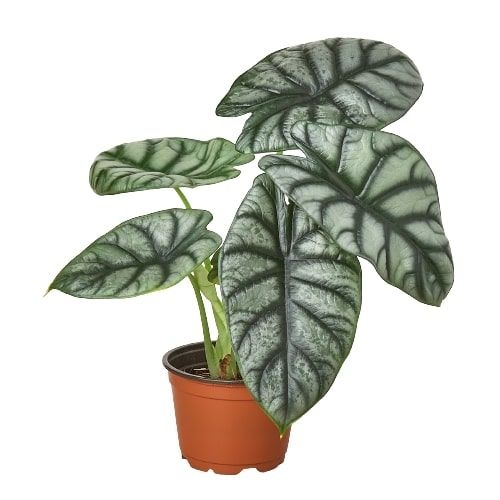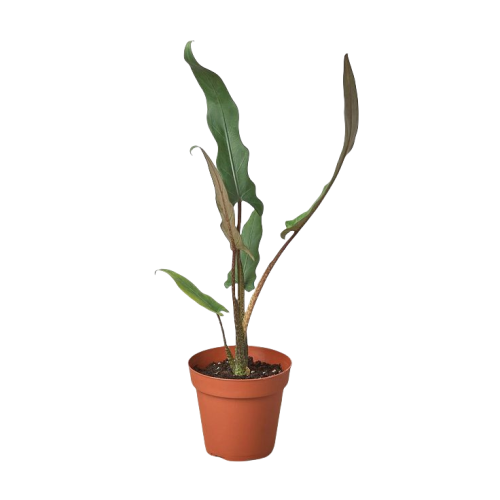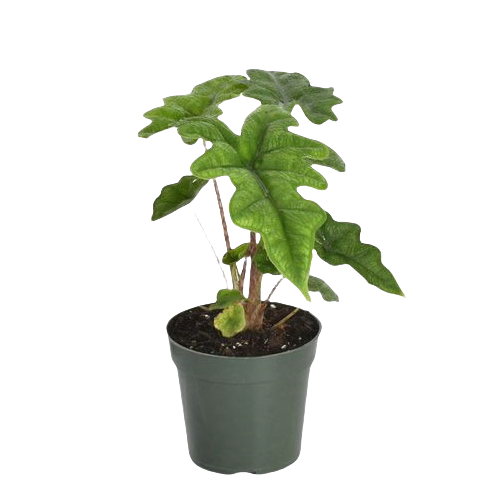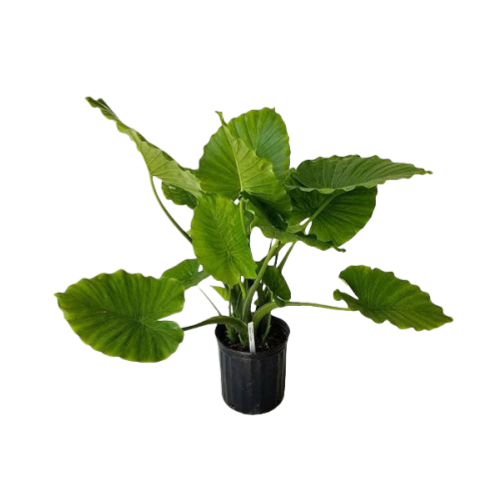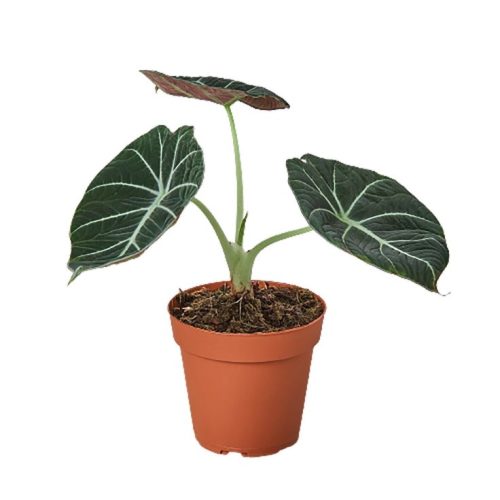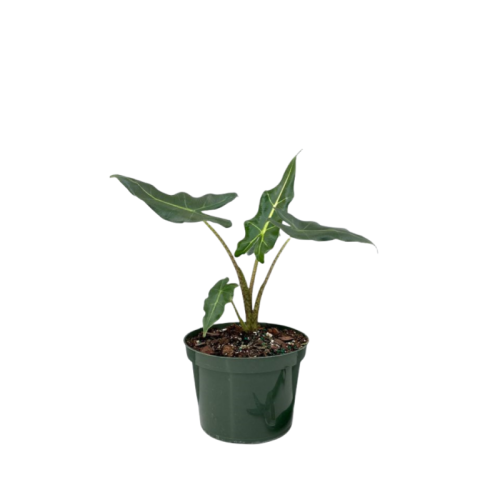Alocasia Melo
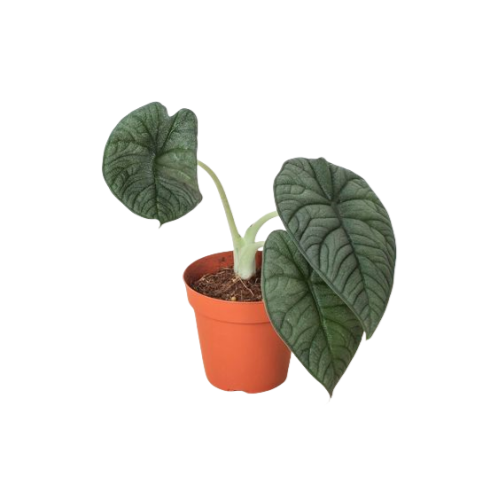
- Botanical Name: Alocasia melo A.Hay, P.C.Boyce & K.M.Wong
- Family Name: Araceae
- Ị ga: 1-2 sentimita
- Okpomoku: 10°C-28°C
- Other: indirect light, high humidity, well-drained soil
Nlebazi anya
Nkọwa nke ngwaahịa
Mara mma nke alocasia melu
Alocasia Melo, also known as the Sweet Melo Alocasia, hails from the lush rainforests of Borneo and is a member of the Araceae family. This plant is a tropical treasure, adored for its thick, textured leaves that resemble the rind of a melon, which inspired its name “Melo”. Typically reaching a height of about 60 centimeters (approximately 2 feet), it thrives in temperatures ranging from 18-28°C and can endure a minimum survival temperature of 10°C。
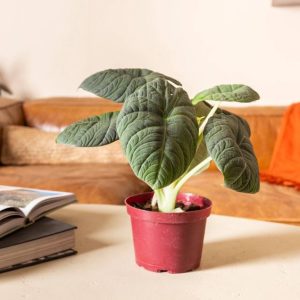
Alocasia Melo
Lowdown na alocasia Melo lekọtara
Alocasia Melo bụ ihe na-adịghị mma na-enwe obi ụtọ, nke zuru oke maka ndị na-achọ ụlọ na-elekọta ndị na-elekọta ya na flayatic flamatic. Ọ na-ahọrọ ka ị na-enwu enwu, na-enweghị isi na iru mmiri, na-eme ya nhọrọ dị mma maka ime ụlọ ịwụ ma ọ bụ ebe obibi mmiri. N'agbanyeghị ịhụnanya ya maka ikpo ọkụ, alocasia Melo bụ nke na-esi nri ifuru ahụ, chọrọ ngwakọta ala nke ọma iji gbochie mgbọrọgwụ ala, nke nwere ike ibute mgbọrọgwụ ire ere.
The Canvas of Nature’s Art
Alocasia Melo‘s leaves are a testament to nature’s artistry. With their large, thick, and rugged texture, these leaves boast a melon-like appearance that’s both intriguing and unique。The color palette of the leaves ranges from greenish-blue to a deep jade green, creating a visual depth that’s hard to find in other plants. They grow on erect petioles, standing out like a painting come to life. The leaf surface has a rubbery texture to the touch, adding a tactile surprise to the visual feast。These leaves can span up to 20 inches in length and 10 inches wide, making them a grand statement in any indoor garden。
Poetry nke alocasia Melo
Alocasia Melo is a plant that’s small in stature but grand in presence. It typically grows to a height of no more than 60 centimeters (about 2 feet), making it a perfect accent piece in smaller spaces or a subtle addition to larger ones。Despite its preference for the understated, Alocasia Melo demands attention with its striking foliage. It’s a plant that whispers rather than shouts, yet it fills the room with its quiet beauty. Its leaves, with their prominent veins and rubbery texture, turn every glance into a moment of appreciation for the simple, yet profound, aspects of nature。
Ihe mkpuchi alocasia melu
Alocasia Melo is a picture of understated elegance, favoring a growth habit that’s as charming as it is manageable. This plant forms a compact, shrub-like structure that’s more akin to a bonsai than a towering jungle giant. Its jewel-like status among Alocasia species is not just about its size, but also about the impact it makes with its striking foliage. Imagine a plant that’s the epitome of ‘less is more’ – that’s Alocasia Melo in a nutshell.
The Patient Gardener’s Companion
One of the endearing qualities of Alocasia Melo is its slow and steady growth pattern, making it a patient gardener’s dream. It prefers to be somewhat root-bound, which translates to fewer repotting chores and more time to appreciate its subtle beauty. This is a plant that doesn’t demand constant attention or upheaval; instead, it’s content to grow at its own leisurely pace, gradually unfurling its large, textured leaves as the years go by. It’s a testament to the idea that sometimes, the most rewarding things in life are those that develop slowly and with care.
A na-ewu ewu na oge kwesịrị ekwesị
Osisi a na-enweta ihe a ma ama n'etiti ime ụlọ na-anụ ọkụkọ maka akwụkwọ a na-apụ apụ akwụkwọ na ụcha ya. Ọ bụ nhọrọ dị mma maka ndị na-achọ ịgbakwunye mmetụ nke ebe ịnya ụgbọ mmiri ma ọ bụ ọfịs. Alocasia Melo di nma nke ukwuu maka ime ụlọ ịwụ na mpaghara ndị ọzọ na iru mmiri dị elu, dịka ọ na-eme nke ọma n'ọnọdụ ndị dị otú ahụ. Obere pere mpe na-emekwa ka ọ bụrụ nnukwu nhọrọ maka ndị nwere oke ohere.
Atụmatụ Nlekọta
To care for Alocasia Melo, it’s important to provide bright, indirect light and a well-draining soil mix. Watering should be done moderately, allowing the top 2 inches of soil to dry out before watering again. Overwatering can lead to root rot, while underwatering can cause the plant to become stressed. The plant prefers a temperature range of 60-85°F and high humidity levels, which can be maintained with a humidifier if necessary. Fertilize sparingly during the growing season to promote healthy foliage growth .





